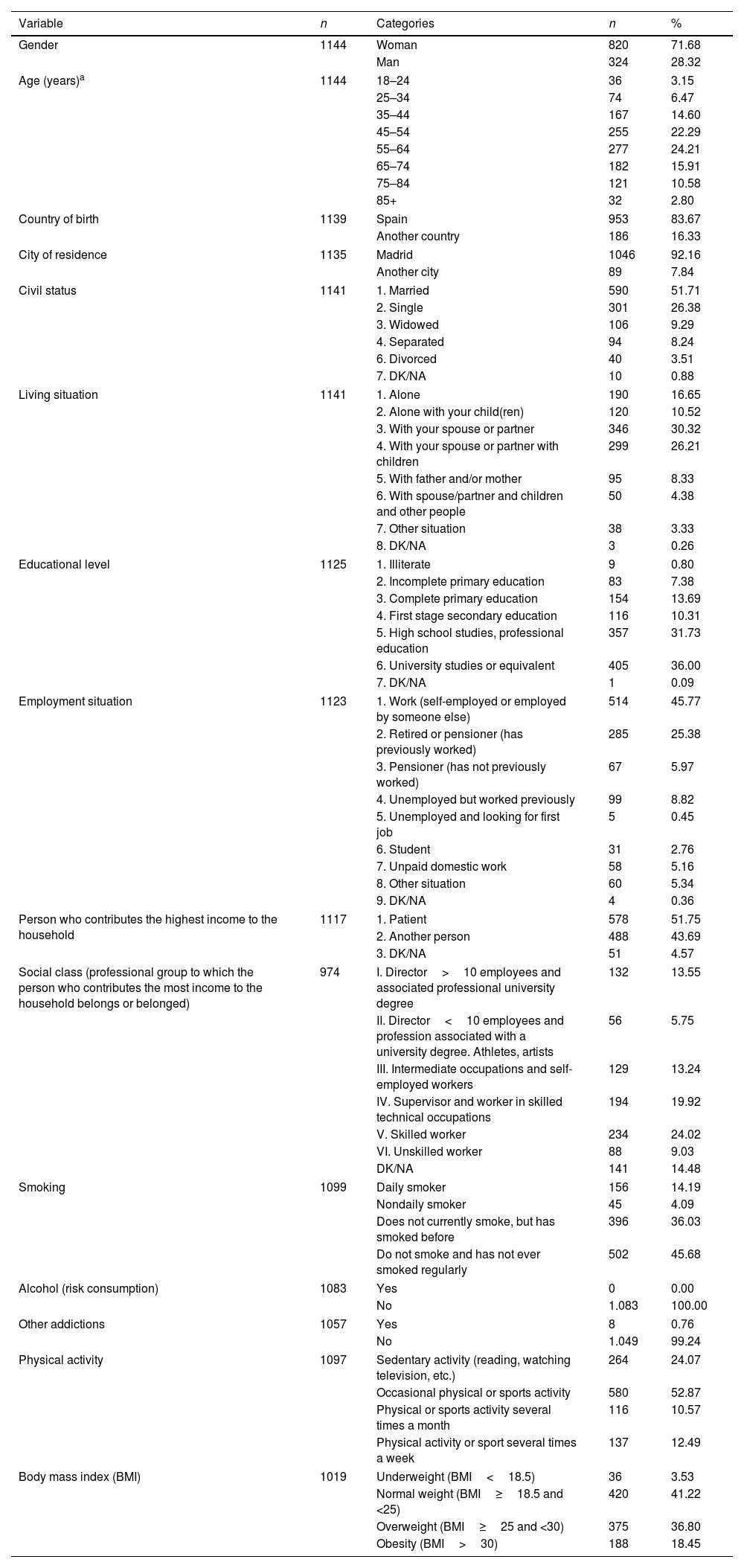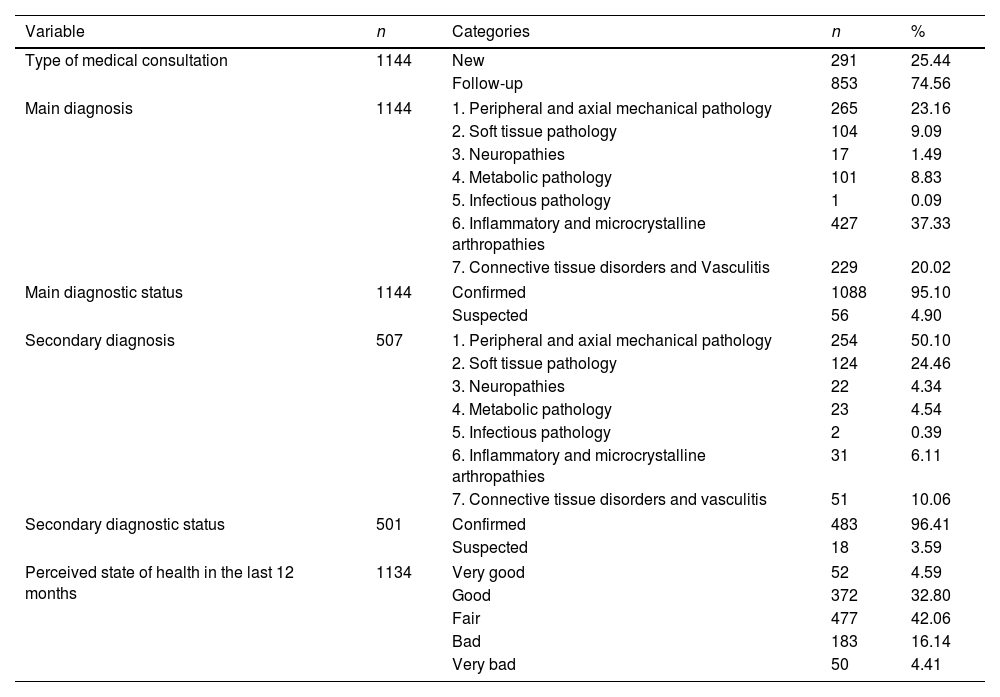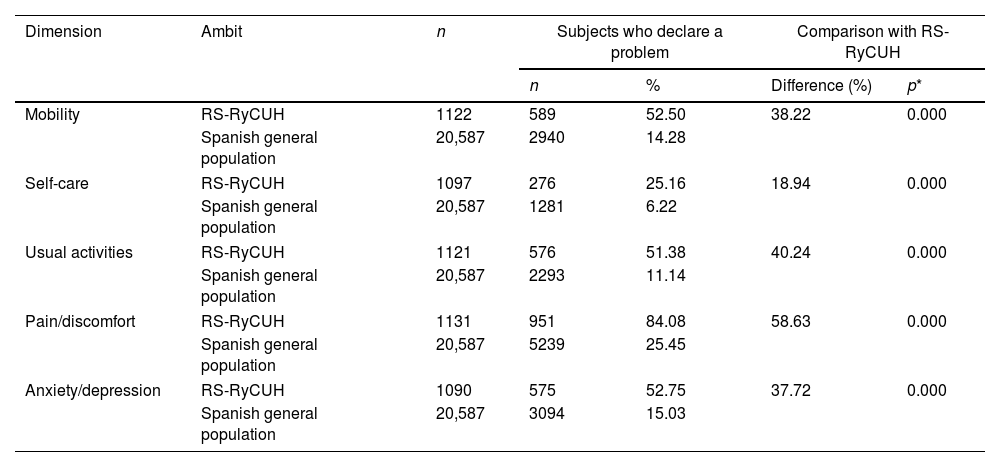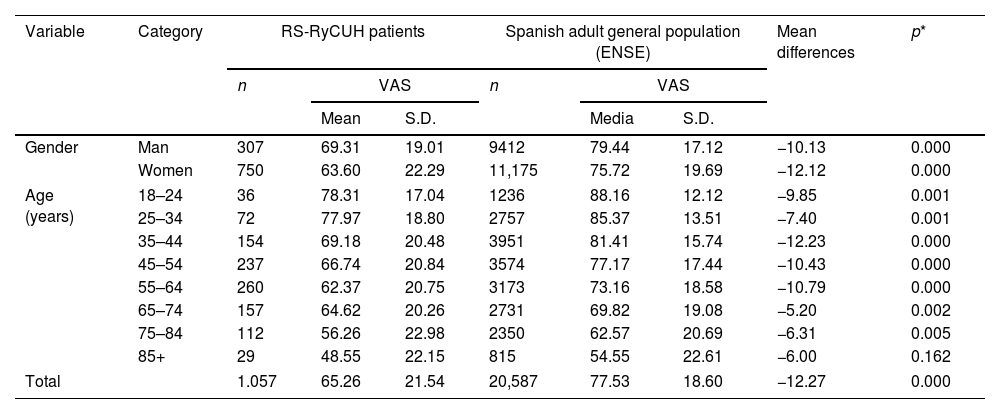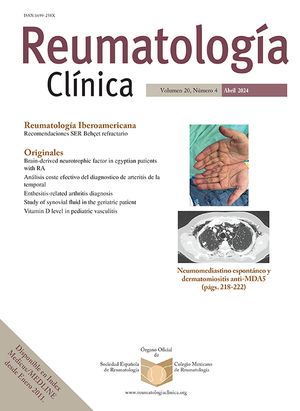Health-related quality of life (HRQoL) is an important indicator of population health and can measure the impact of medical actions. The main objective of this study was to determine the HRQoL of patients with rheumatic diseases (RD) and compare it with that of the general population.
MethodsObservational, cross-sectional, single-center study, with consecutive inclusion of outpatients over 18 years of age seen at a Rheumatology hospital-based outpatient clinic in Madrid. Sociodemographic, clinical variables and HRQoL were recorded. HRQoL was measured with the 5-dimension, 5-level EuroQoL (EQ-5D-5L), which includes the EQ-Index (0–1 scale) and a visual analog scale (VAS, 0–100 scale). A descriptive analysis and a comparison with the HRQoL of the Spanish general population were performed.
Results1144 patients were included, 820 (71.68%) women, with a mean age of 56.1 years (range 18–95), of whom 241 (25.44%) were new patients. In patients with RD, the HRQoL measured with the EQ-Index and with the VAS, was 0.186 and 12 points lower, respectively, than in the general population. The decrease in HRQoL affected the 5 health dimensions, especially “pain/discomfort”, followed by “daily activities” and “mobility”. This reduction in HRQoL was observed in both men and women, and in all age ranges, although it was greater between 18 and 65 years of age. The reduction in HRQoL affected all RD subtypes, especially the “peripheral and axial mechanical pathology” and the “soft tissue pathology” group.
ConclusionsPatients with rheumatic diseases report worse HRQoL when compared to the general population in all dimensions of HRQoL.
La calidad de vida relacionada con la salud (CVRS) se considera un indicador importante para valorar el estado de salud poblacional y medir el impacto de las actuaciones médicas. El principal objetivo de este estudio es conocer la CVRS de los pacientes con enfermedades reumáticas (RD, por sus siglas en inglés) y compararla con la población general.
MétodosEstudio observacional, transversal, unicéntrico, con inclusión consecutiva de pacientes ambulatorios mayores de 18 años atendidos en la consulta hospitalaria de reumatología. Se recogieron variables sociodemográficas, clínicas y CVRS medida con el EuroQoL de 5 dimensiones y 5 niveles (EQ-5D-5L) que incluye el EQ-Índex (escala 0-1) y una escala visual analógica (EVA, escala 0-100). Se realizó un análisis descriptico y una comparación con la población española según la Encuesta Nacional de Salud.
ResultadosSe han incluido 1.144 pacientes, 820 (71,68%) mujeres, con edad media de 56,1 años (rango 18-95), de los que 241 (25,44%) eran pacientes nuevos. En los pacientes con RD, la CVRS medida con el EQ-Index y con la EVA, fue de 0,186 y 12 puntos menor, respectivamente, que en la población general. La CVRS afectó a las 5 dimensiones de salud, especialmente a «dolor/malestar», seguida de «actividades cotidianas» y «movilidad». Esta reducción de la CVRS se mantuvo tanto en varones y mujeres, y en todos los segmentos de edad, aunque fue mayor entre los 18 y 65 años. La reducción de CVRS afectó a todos los subtipos de RD, especialmente a la «Enfermedad mecánica periférica y axial» y al grupo de «Enfermedad de tejidos blandos».
ConclusionesLos pacientes con enfermedades reumáticas declaran peor CVRS en comparación a la población general en todas las dimensiones de la CVRS.
Artículo
Comprando el artículo el PDF del mismo podrá ser descargado
Precio 19,34 €
Comprar ahora




